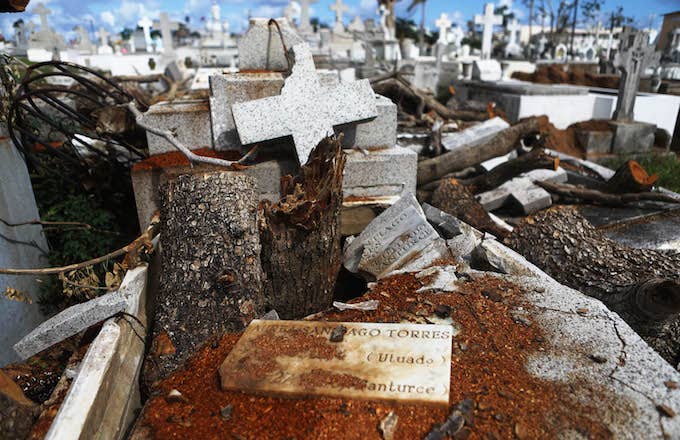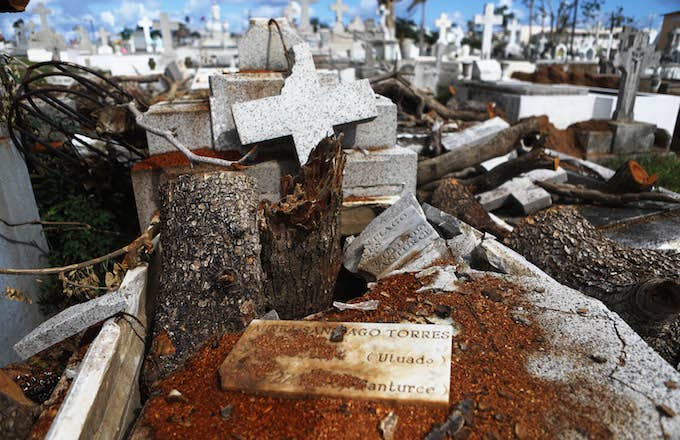
Findings from a study led by scientists at Harvard’s T.H. Chan School of Public Health suggest that the official Puerto Rican death toll of 64 was “a substantial underestimate,” and that the post-Hurricane Maria response has resulted in 4,645 “excess deaths.”
According to NPR, the team forewent finding and counting dead bodies for a more informative approach—surveying 3,299 randomly chosen households over the course of three weeks, interviewing citizens about their experiences, and garnering an estimate from there. The researchers claim that there’s a 95 percent likelihood the official death toll lies somewhere between 800 and 8,500 people, with 5,000 seeming most accurate.
As for their methodology, the occupants of the 3,299 households were asked about displacement, loss of infrastructure, and causes of death. The researchers reached their excess death figures by comparing their estimates of post-hurricane mortality rates with the official rates for the same period in 2016—which presented a discrepancy of 62 percent. The study, published in The New England Journal of Medicine today, concludes that “the number of excess deaths related to Hurricane Maria in Puerto Rico is more than 70 times the official estimate.”
While it may seem like an odd way to conduct research, this household survey method is a universally accepted strategy. However, the sample has to be genuinely random, for this kind of data collection to provide functional statistics.
Unfortunately, many of these deaths are aptly described as “excess deaths,” as both the federal and local government were either vastly unprepared or responded so lackadaisically that one can’t help but think of FEMA’s management of New Orleans post-Hurricane Katrina. 83 percent of Puerto Rican households were without power for over 100 days, for example.
Sadly, while the team’s research spanned three weeks and ended on December 31, 2017, the trends they’ve found are unlikely to have slowed. “We saw consistent, high rates, in September, October, November, December,” said Rafael Irizarry, a biostatistician of the team. “There’s no reason to think that on Jan. 1 this trend stops.”
While other organizations have made an effort to garner more accurate figures—CNN found 499 hurricane-related deaths, The New York Times found over 1,000 excess deaths with a Penn State researcher finding similar figures—the Puerto Rican government-commissioned study by George Washington University’s Milken Institute School of Public Health has yet to publish its results. While these are supposed to become public this summer, the Harvard research team maintains today’s findings merely supplement other studies' efforts, and could help more efficiently find accurate figures.
“Our approach is complementary to that and it provides a different kind of estimate and a different kind of insight into the impact of the hurricane,” said Caroline Buckee, lead author of today’s study, and epidemiologist at Harvard’s T.H. Chan School of Public Health. The team was eager to suggest that Puerto Rico’s government could use their methodology at an even larger scale, and minimize the uncertainties and reduce the wide range of potential deaths to a more stable one.
Ultimately, there's currently little one can do to fend off hurricanes but build stable infrastructures and prepare for the worst. Places like Puerto Rico need the proper funding and federal attention in order to survive, and can't simply rely on fundraising by celebrities every time the government is unwilling to help. Thousands of deaths could've been prevented, were it for a more reliable, sturdier power grid, more responsive federal and local governments, and a prioritized focus on hospitals and healthcare. Hopefully, these factors will be internalized before the next natural disaster hits.

